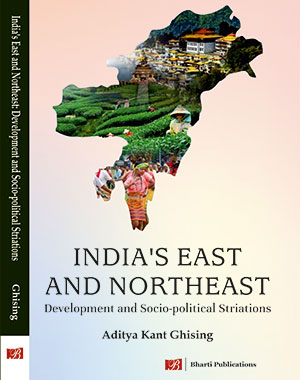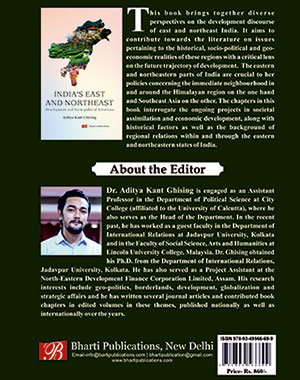-
VIEW/DOWNLOAD PDFAbout the BookThe northeastern region of India, comprising the states of Arunachal Pradesh, Assam, Mizoram, Nagaland, Manipur, Meghalaya, Tripura and Sikkim, is one which has found a rather unique space in the development discourse of India. Ever since the pre-colonial era, this region has had its own characteristic nature of governance, sustenance as well as modes of production and social cohesion, which was different from what would later emerge as the ‘mainstream’ or the ‘mainland’ of India. This includes the colonial administration’s policies with regard to the North-East Frontier Tracts, which later became the North-East Frontier Agency and culminated in the creation of Arunachal Pradesh. Therefore, upon the arrival of the colonial powers in the Indian subcontinent, particularly the British, the northeastern region’s destiny in India’s nation-building started to take shape. According to some estimates, India’s northeastern region accounts for approximately 7.9 percent of its total land area, yet it is home to over 75 percent of the languages from four major language families which include Indo-Aryan, Tibeto-Burman, Austro-Asiatic and Dravidian, the latter of which includes a small community of Tamil speakers in the Moreh District of Manipur. In terms of governance, one finds many similarities between the colonial administration’s policies and those of independent India, towards the region, especially in areas that are considered to be sensitive from a strategic perspective.

